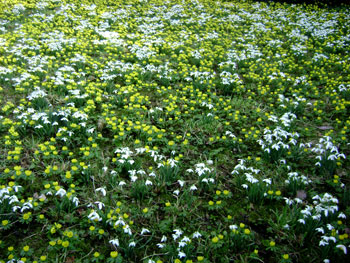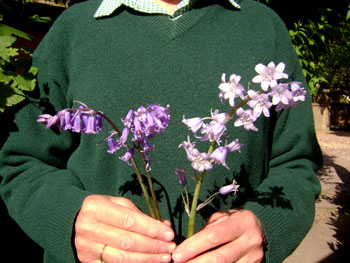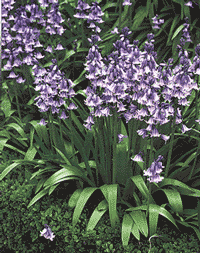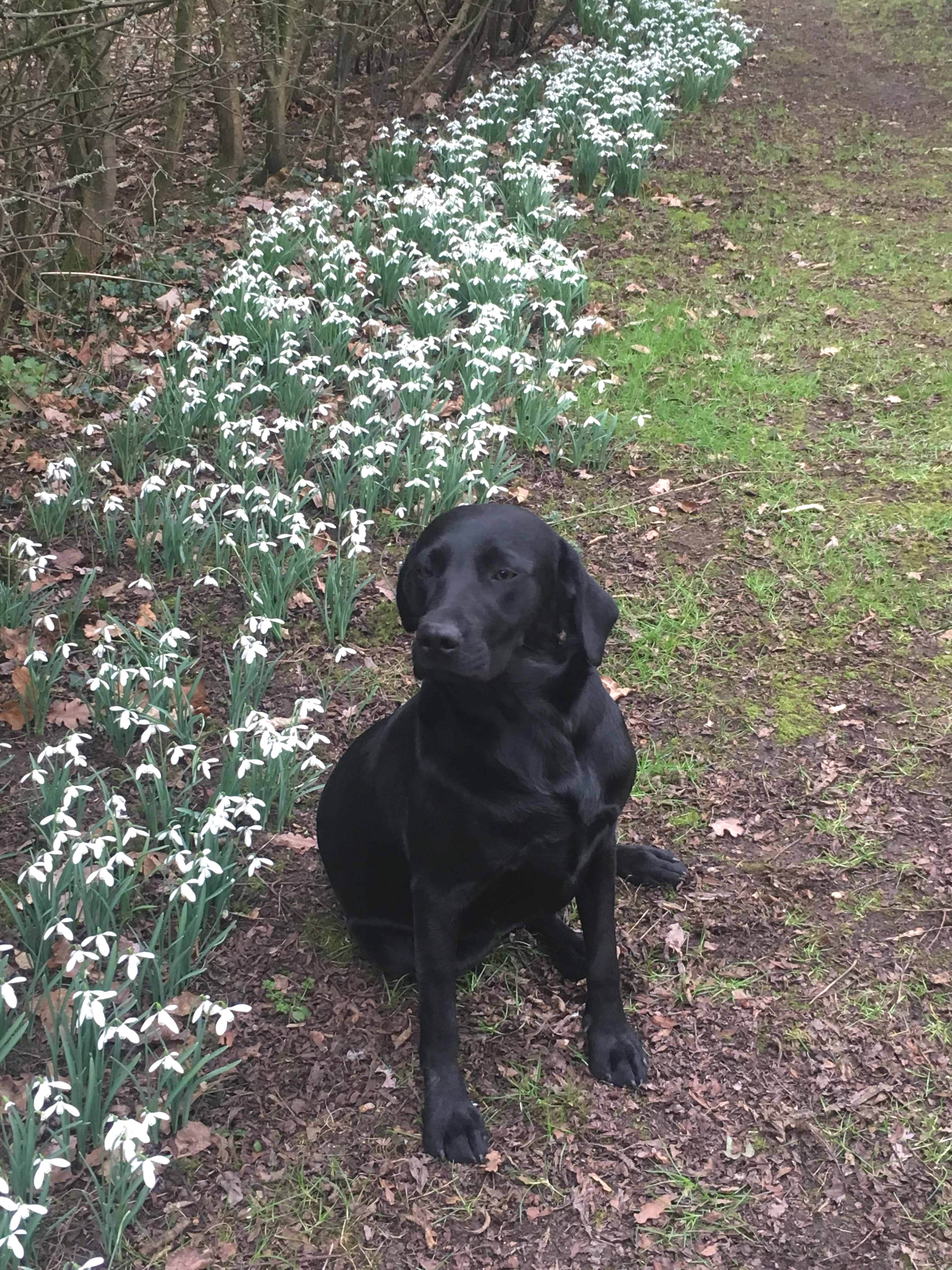Snowdrops, Aconites and Bluebells in the Green, from the Clare Bulb Company
Click
here if you wish to order on line
 |
 |
| A
typical bluebell wood, this being Badby Wood in Northamptonshire, photographed
on May 10th, when they were close to their peak in terms of flowering. |
These
snowdrops are growing in a hedgerow. We planted about fifty bulbs five
years before this picture was taken, this showing how snowdrops
gradually increase in number. There will be a couple of hundred now. |
 |
 |
| Double
snowdrops have bigger and more intense white flowers, which are
multi-petalled, (i.e. double-flowered). They flower slightly later than
the single-flowered varieties. |
A
nice mixture of aconites and snowdrops growing in perfect harmony. |
Many people prefer to plant snowdrops, aconites and bluebells in
full leaf, i.e." in the green". What this means is that the bulbs are
lifted in February until early May, whilst in full
vigour of growth, and are then carefully wrapped by us to preserve moisture and
quickly dispatched to customers, who should plant them as soon as possible after
their receipt.
It is argued that this method of planting is more likely to
achieve the desired result than planting dry bulbs, as one would buy in the
autumn. Click
here for a picture of snowdrops, bluebells and winter aconites being
prepared for delivery in our packing shed, with further information about our
business.
Please note that we sell bluebells, snowdrops and aconites as "dry" bulbs
in the autumn, as shown on our autumn price-list, which can be accessed by clicking
here. Scroll down to the Woodland Bulb section to find them.
The English Bluebell: The
bluebells we sell are Hyacinthoides Scilla non-Scripta, which are the native
variety. These are characterised as having flowers on just one side of the
flowering stem. They are choosy growers, and much prefer soil rich in rotted
leaf-mould, from which they obtain the necessary trace elements and nutrients
for growth. These conditions are typically found in old-established deciduous
woodland. Too much shade however is detrimental to their growth. The ideal
setting is coppiced woodland, or where the leaf cover is relatively light as one
finds in beech woods. They flower at the end of April, being lightly
scented.
The Spanish bluebell, which is known by various names, including Scilla
Campanulata and Hyacinthoides Hispanica, are nice enough flowers in
their own rights, and grow readily in a wide range of soil types and conditions.
They are very invasive, and seemingly grow anywhere. We have come across them
growing out of walls. They come in various colours, including pink and white. The problem is that they
are often sold as "English Bluebells", and if planted will in due
course supplant the native bluebell, as they hybridise with them, becoming the dominant
strain. Click here for more
information on Spanish bluebells. They are characterised by fleshy mid-green
leaves and a range of colours. They flower a month or more earlier than the
English variety.
 |
 |
| The
English bluebell is on the left of the picture, the Spanish-type on the
right. |
Spanish
bluebells are taller, a paler blue, with more flowers per stem. Can be pink
or white. |
Establishment: It should be noted that
English bluebells can
take several years to establish themselves after transplanting. It is not
unusual to have only leaves in the year following transplanting, even if the
plants are in flower when received from us. This is because the bulbs are
re-establishing their root systems, and do not divert strength to producing
flowers. Snowdrops are not so affected, but nonetheless can take a year or so to
produce a good show. Aconites are in fact corms, so behave differently to bulbs.
They tend to seed themselves over time, and if they like where they are will
spread very readily.
Where to
Plant: In planting bluebells it is wise to remember that they
are woodland bulbs, and appreciate growing in shady areas, preferably with
leaf-mould in the soil. They prefer damp soil
conditions. Snowdrops are more tolerant of full sun, mainly because there is not
much strength in the sun in January and February, which is their flowering
period. Aconites grow just about anywhere, but should be left undisturbed after
planting. They are very useful planted up against tree trunks and under hedges,
where not much else will grow.
Bluebells should be planted as deeply as possible, 4 ins being the
minimum, and more if possible. In nature they are often found over a foot
beneath the surface of the soil. Snowdrops should be planted between 2 and 4 inches deep.
Aconites can be planted virtually on the surface of the soil.
When bulbs are received from us one can see at what depth at which
they have been growing, as that part of the stem that has been in the soil is
very pale, in fact nearly white.
 |
A
lovely picture sent to us by a customer. Not only are the snowdrops from
the Clare Bulb Company, but so is the Labrador, Betty! We have her
father, Billy.
Click here to know more about our Labradors. |
Wild
flowers: If you are interested in growing wild flowers, try this link, www.wildflowerlawnsandmeadows.com,
as you will certainly find what you want there.
Main
price-list: Click here
to connect to our main on-line ordering page, which offers a wide range of spring and
early summer flowering bulbs.
Home page:
Click here for the Clare Bulb Co home page.
Clare Bulb Co, Riverside House, Clare,
Suffolk, CO10 8NS
Tel: 01787 277441 email: sales@clare-bulbs.co.uk






